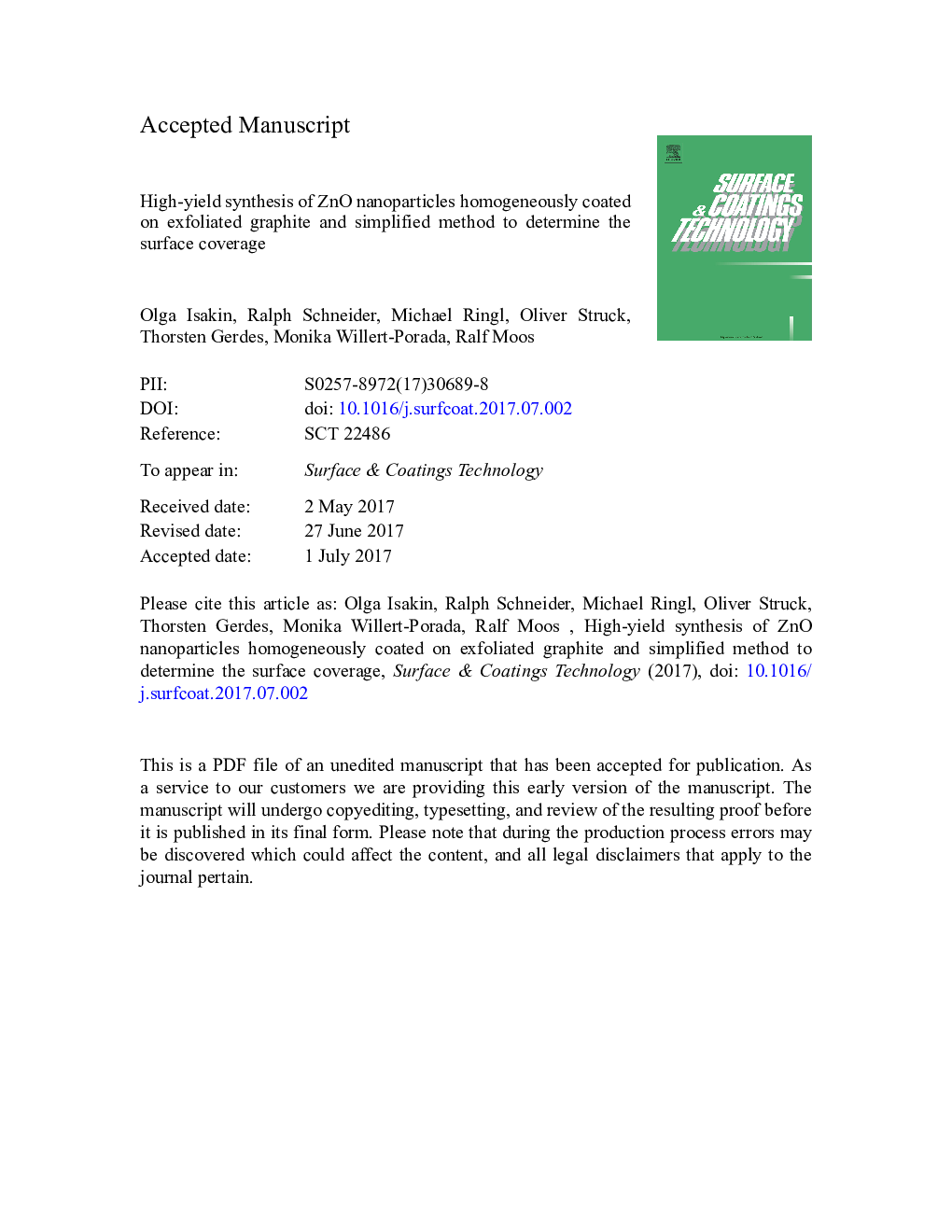| Article ID | Journal | Published Year | Pages | File Type |
|---|---|---|---|---|
| 5464835 | Surface and Coatings Technology | 2017 | 34 Pages |
Abstract
Highly dispersed ZnO nanoparticles (NPs) with an average diameter of 4.7Â nm were attached to exfoliated graphite (EG) by a facile, free of hazardous chemicals, scalable synthesis route providing a high yield. The adsorption of ZnO NPs on EG results in a monolayer of NPs with a maximum coverage of 40% according to the random sequential adsorption (RSA) model. Furthermore, we introduce a novel simplified method to determine the surface coverage, by taking only four parameters into account - namely the specific surface area of the initial substrate and the concentration, size, and density of the adsorbed particles. Up to now, the determination of the surface coverage has required to count the single particles within the investigated surface area. Besides, this method reached its limit for inhomogeneously coated surfaces due to the imprecise results. The main idea here is to calculate the surface coverage for the complete sample in contrast to the abovementioned method that is limited by the investigated area. Moreover, according to our method, counting single particles per unit area is not necessary anymore, leading not only to substantial time savings but also to an improved calculation precision due to the consideration of the whole sample. Due to the application of tailored parameters, the here-derived equation can be applied for various composites including adsorbed spherical particles on the substrate.
Related Topics
Physical Sciences and Engineering
Materials Science
Nanotechnology
Authors
Olga Isakin, Ralph Schneider, Michael Ringl, Oliver Struck, Thorsten Gerdes, Monika Willert-Porada, Ralf Moos,
